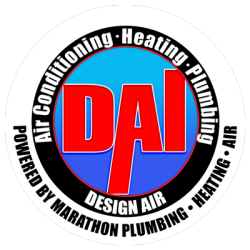If have a heater blowing cold air, or not blowing at all, you want it fixed before it gets even colder. A lot of things can go wrong with a heating system, but before you call for a furnace repair there’s some common furnace problems you can check yourself.
The Most Common Furnace Problems
If you live in Southern California and have a central heating and cooling system it’s most likely you have a gas furnace. They’re much more complicated than electric resistance heating, but a lot less expensive to operate. As an important clarification in the following discussion, central furnaces have a fan that circulates air throughout the home and a blower that provides air to the gas burner.
Here are some common furnace problems you’re likely to encounter at one time or another. Some are easy to take care of yourself, some call for an expert.
Quick and Easy
Sometimes if your heater’s blowing cold air or you’re not getting enough heat you don’t even have to go to the furnace for a fix. So start with this checklist.
- Check the thermostat settings. It may have been accidentally set to off or cooling, or to a very high temperature. If the fan is running continuously, it could be because the thermostat is set to fan “low” or “high” rather than “auto.” Wireless models may need a battery replacement.
- A dirty air filter can cause the heater to cycle on and off quickly and a clogged air filter can trip a safety that shuts down the fan to protect its motor. Filters may need to be replaced as often as once a month. So check how dirty they are with each change and adjust your replacement schedule according.
- A tripped circuit breaker can prevent the fan from running, or in the case of an electric heating element lead to a heater blowing cold air. Just reset the breaker. But if this happen frequently it’s time for repairs.
Do It Yourself
- If you’re not getting any heat the pilot light may have gone out. You can follow the instructions on your furnace to re-light it. If your furnace has an automatic ignition system you’ll probably need a professional to diagnose and fix the problem
- If you have a faulty thermostat the wiring is low voltage wiring so replacing it can be a DIY project. Consider a programmable model — you’ll save on your heating bill and may qualify for a rebate.
Time to Repair or Replace
The wear and tear of normal usage eventually lead to problems that require a professional repair or a replacement installation. Here are some of those situations.
- A pilot light, thermocouple, controller, or gas valve has failed.
- A motor has failed or a belt has broken.
- The burner needs adjustment or cleaning.
- A limit switch causes the blower to run continuously.
- Noisy operation indicating a mechanical problem, an airflow restriction, or a clogged burner.
Due to the risk of a natural gas leak as well as of carbon monoxide poisoning anything related to a gas line, gas valve, burner, pilot light, or flue should only be performed by a trained and licensed expert.
If you’re handy and a bit ambitious, check out https://www.bobvila.com/articles/furnace-troubleshooting-2/#.WmUnR7iE1jg for more detailed information.

